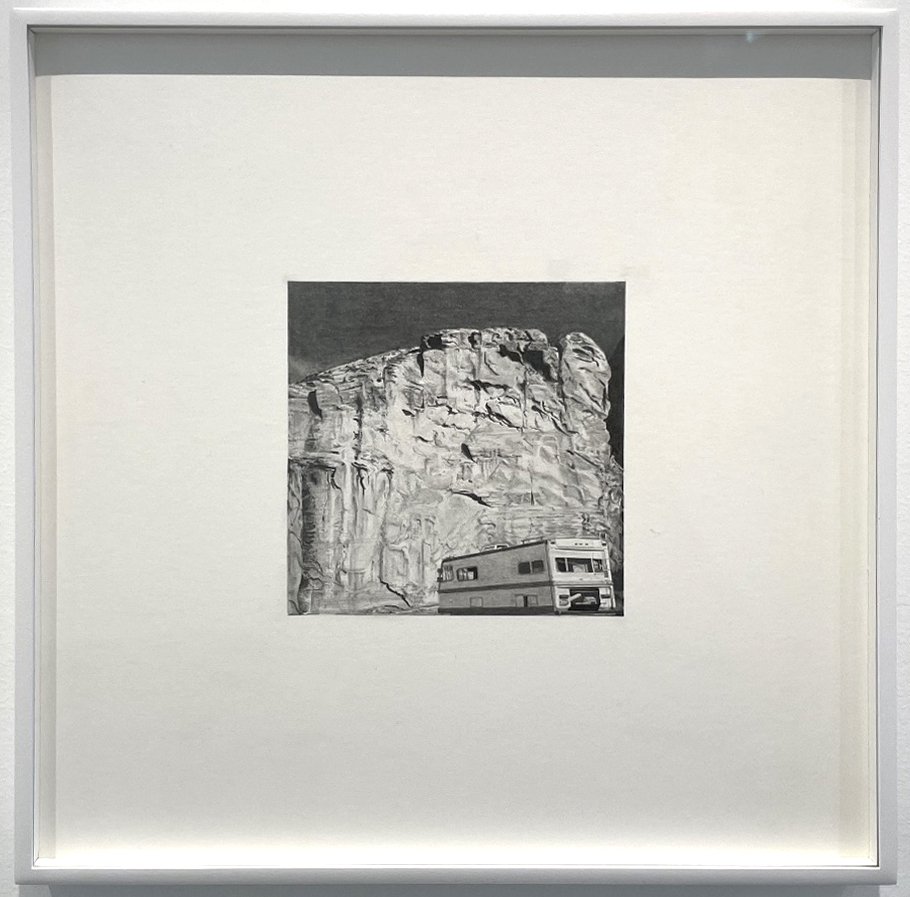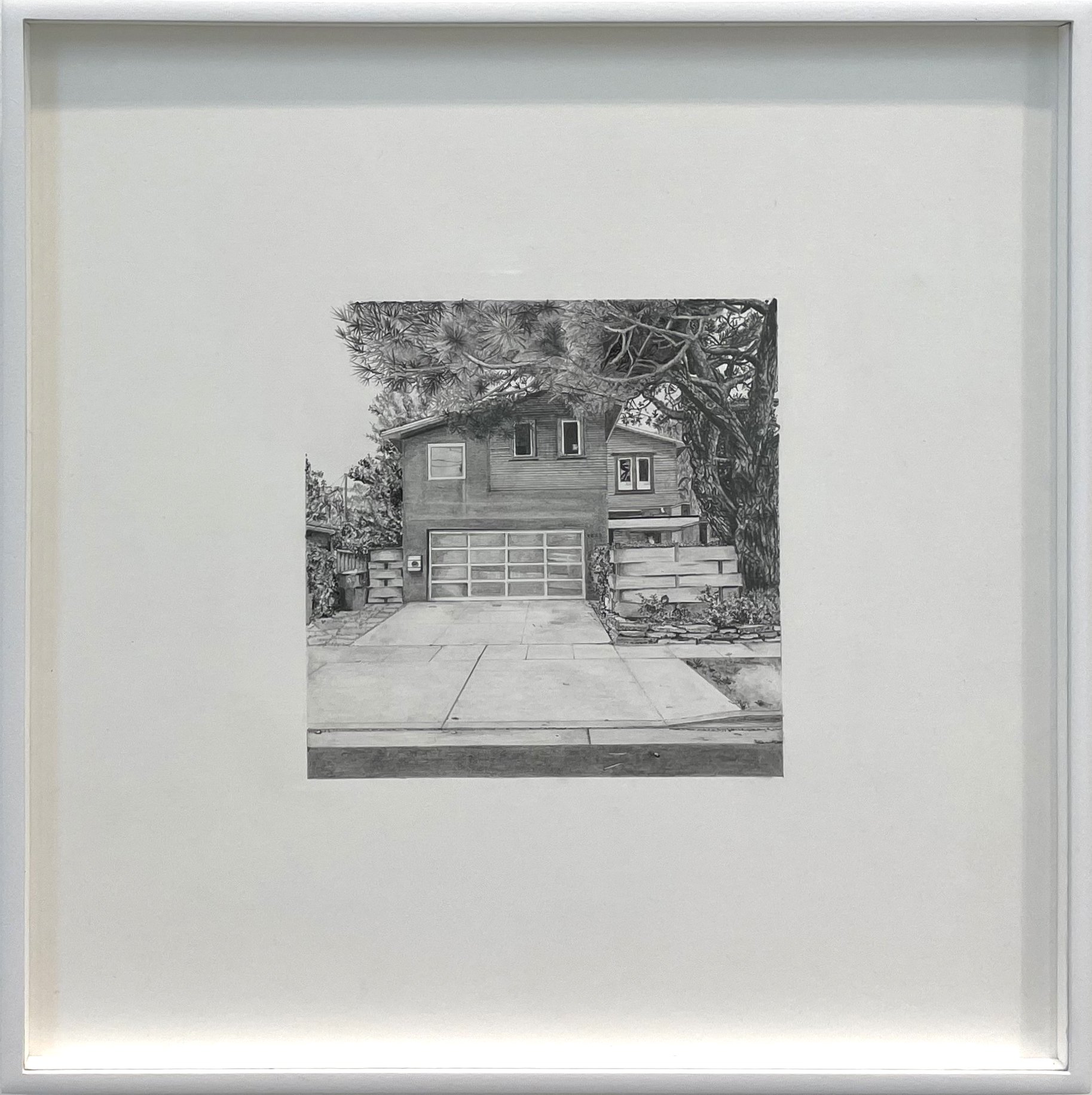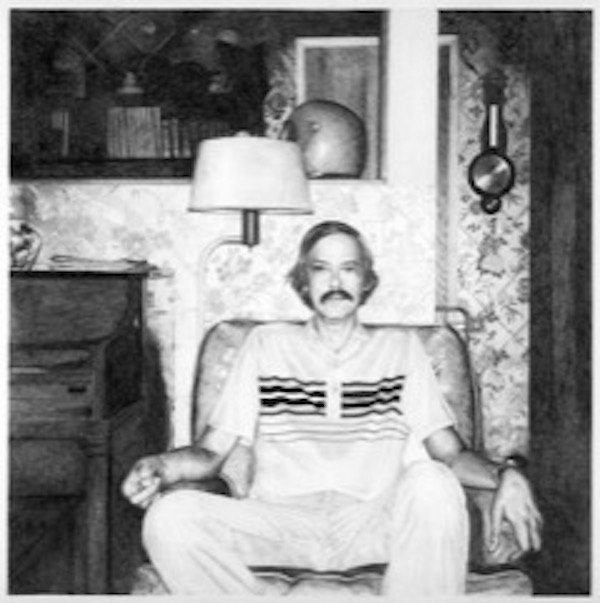





Amy Russell Home and Away
Amy Russell’s pencil drawings make monuments out of the fragments that surround, inform, and enshrine our memories. Born out of personal experiences of grief, her works play with tensions between private memory and public record, adopting a spirit of documentary objectivity to speak to the banality, simplicity, and inexpressible sorrow of loss. Russell’s drawings faithfully recreate found and personal images in a rich range of grays. Meditative in their precision and quiet in their scenes of stillness, the works are immediately striking for their masterful detail, the result of their painstaking mediation through the artist’s hand. Meanwhile, the collections are organized by a photographic approach that accepts the image as information, reproducing pictures with an almost indexical impassivity. The artist has described her work as “drawing like a camera,” making equal note of the arbitrary and the intimate.
The body of work that comprises Home and Away includes three distinct series based on three different sets of photographs. The first series takes as its basis a series of photographs by Russell that follow a row of houses along Venice’s Glyndon Ave, beginning with the artist’s childhood home. Begun after her mother’s passing, Russell’s images are inscribed with mournful intimacy while at the same time embracing the offhand perspective of the impartial observer. The works’ titles include factual information about each house, including its legal parcel name and number and its tax base; placed side by side, this depiction of a residential block becomes a chronicle of the neighborhood’s changing demographics, mapping the loss of a community and the passage of time.
The other two series feature images found in Russell’s paternal grandparents’ personal archives. One series features three Polaroid images representing Russell’s father and his brothers: the latter two are shown in portraits, while the former is only alluded to in an image of a house (a hand-scrawled caption, also exactingly reproduced by the artist from the original Polaroid, explains that it is his birthplace). Discovered among her grandparents’ belongings after their deaths, the images are fleeting, imperfect records of lives and relationships. The last series features images taken on an RV trip, showing a short-lived family camper amid the landscape of the American Southwest. Documenting a brief period of time, the works are equally imbued with a sense of home and rootlessness. Russell’s drawings become a means to further memorialize a transient moment.
Taken altogether, the three series in Home and Away simultaneously attest to the power of the image and, in a deadpan tone, acknowledge its failure. These drawings are documents of Russell’s dedication, extending the life of her late relatives’ fleeting memories through hours of attention and labor. They are also testaments to what is not depicted – the experiences for which there is no record, which live only in memory until they are lost to time. In this way, Russell’s work makes peace with what can and cannot be preserved of our loved ones’ lives over generations.
Alongside Russell’s drawings is the debut of Vesta Gallery, the artist’s new exhibition project housed in a miniature RV similar to the one depicted in many of her drawings. Named after the artist’s grandmother as well as the Greek goddess of hearth and home, the project uses humor to address the themes of community and domesticity that appear in Russell’s other works, while bringing in the work of the artist’s friends and loved ones. Vesta Gallery’s inaugural exhibition features small-scale works by the many people the artist has lived with over the years, in a collection that serves at once as a housewarming and tribute to a shared past.- Jack Levinson





